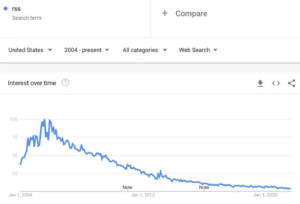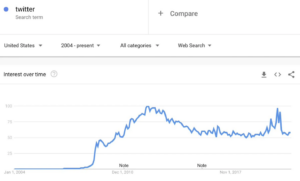How open lost to closed in web2
How open lost to closed in Web 2 — and how Web 3 can bring open back 🧵
As @alexismadrigal wrote in this excellent essay, back in 2007 it looked like open services would dominate the internet going forward: theatlantic.com/technology/arc…
 From “The Weird Thing About Today’s Internet” in The Atlantic
From “The Weird Thing About Today’s Internet” in The AtlanticBut with the launch of the iPhone and the rise of smartphones, proprietary networks quickly won out
 Ibid.
Ibid.In other words
closed, controlled by centralized company
Beat out:
open, controlled by the user
(I got this framing from somewhere but can’t find the source- please @ me and I’ll add a citation :))
Why did closed, proprietary services win out?
We had the building blocks for open social networks back in 2007, including RSS and lesser known, related protocols.
But these protocols relied on outside parties to store data. For users who wanted to publish a social feed while controlling their data, this usually meant registering a domain name and signing up for a hosting provider.
Anyone who builds consumer software will tell you that an onboarding experience that requires more than a few, simple steps is ngmi.
So then services like Twitter came along that adopted the best features of open protocols but made it extremely easy to onboard and use.
The catch: you were using their database and code, handing full control over to a centralized organization.
You can see from these Google Trends charts of RSS vs Twitter what happened next.
 The decline of “RSS” via Google Trends
The decline of “RSS” via Google Trends The rise of “Twitter” via Google Trends
The rise of “Twitter” via Google Trends(I wrote more about this topic back in 2017 here cdixon.org/2017/05/27/cry…)

Today, we have programmable blockchains like Ethereum. Programmable blockchains are virtual computers that run code and keep state.
When you deploy code to Ethereum, the code runs autonomously and perpetually. The author of the code can choose to have the code (and the data it operates on) controlled by a community, a person, or no one at all.
In Web 3, almost all projects choose to have the code run fully autonomously (controlled by no one) or controlled by a community.
(For those who didn’t realize that modern blockchains are fully developed, near Turing-complete computers, there are in-depth materials on the topic here
This means that in Web 3 you can now build advanced protocols that are open like RSS but also store things like usernames, social graphs, and posts in a credibly neutral way.
Combined with the right front-end clients, open services can now match the advanced functionality and streamlined onboarding of centralized services.
We’re about to see a wave of new consumer apps including social networks that take advantage of this.
This will hopefully unlock a new wave of innovation. Open services support composability— the ability to remix open services the way you can currently remix open source software.
The power of open source software is, as @naval says, that the world only has to solve each problem once
Web 3 extends this power beyond software to services, making it possible to build an open internet that doesn’t compromise on features or user experience.
***
Originally published here.